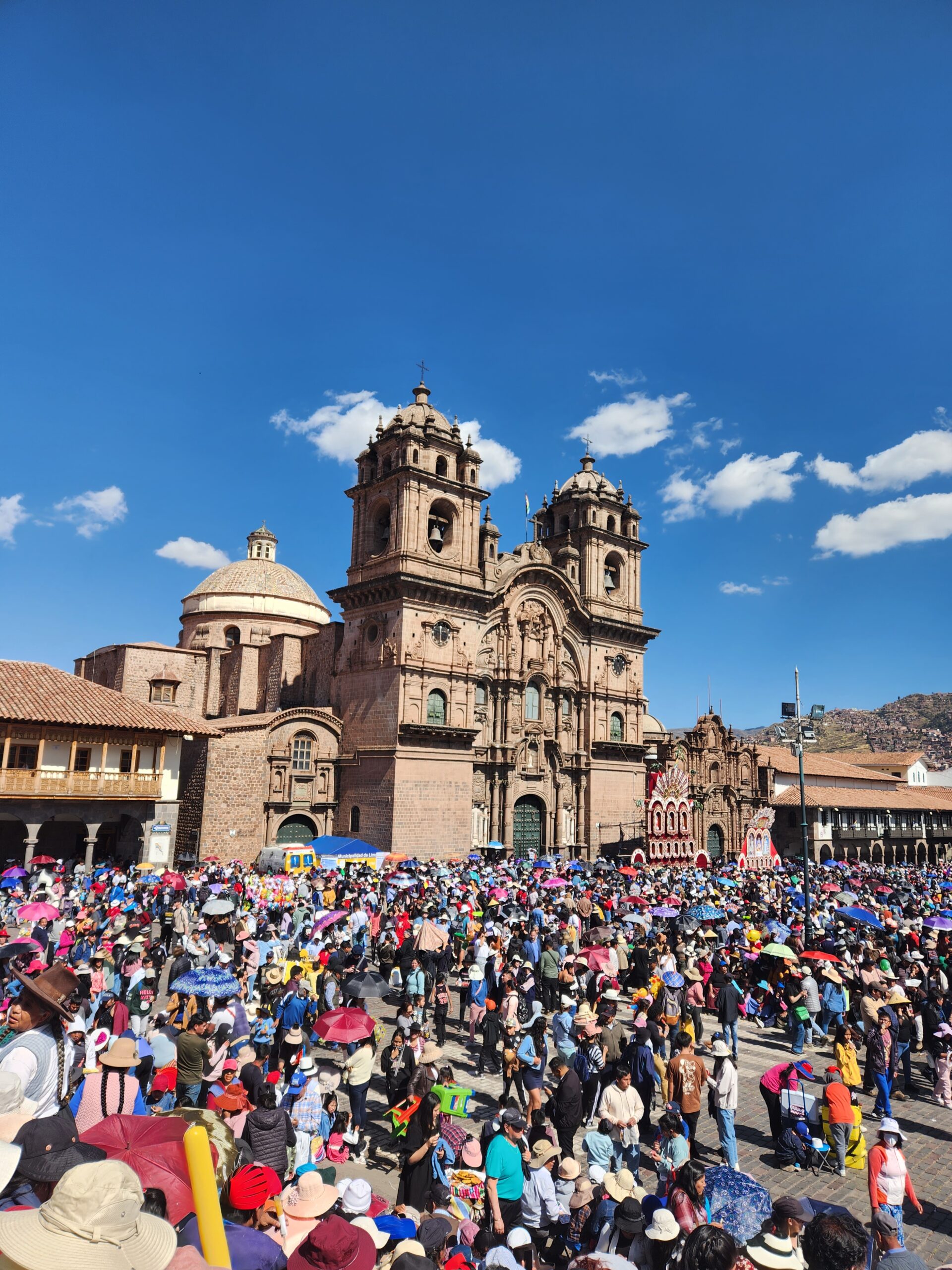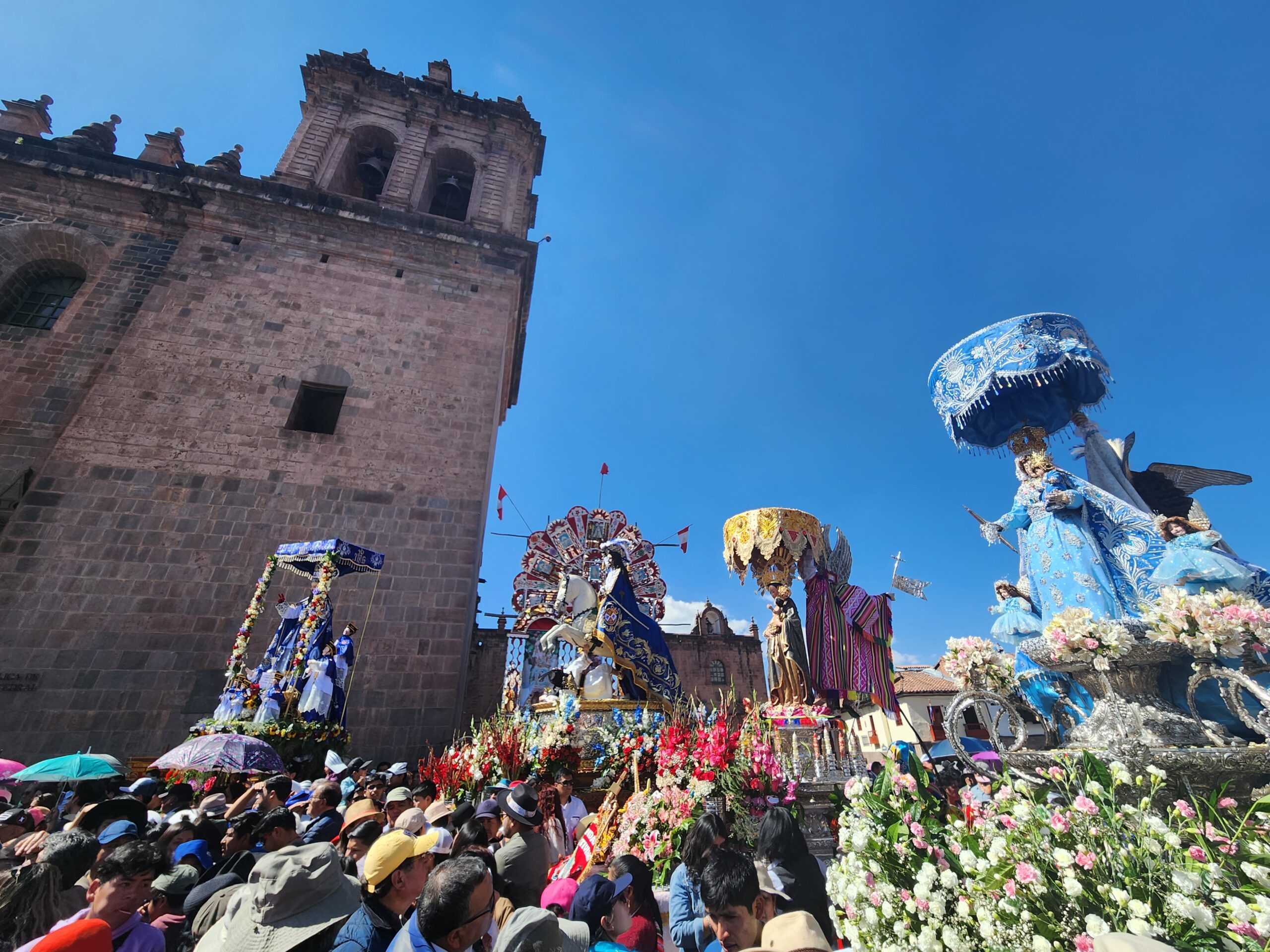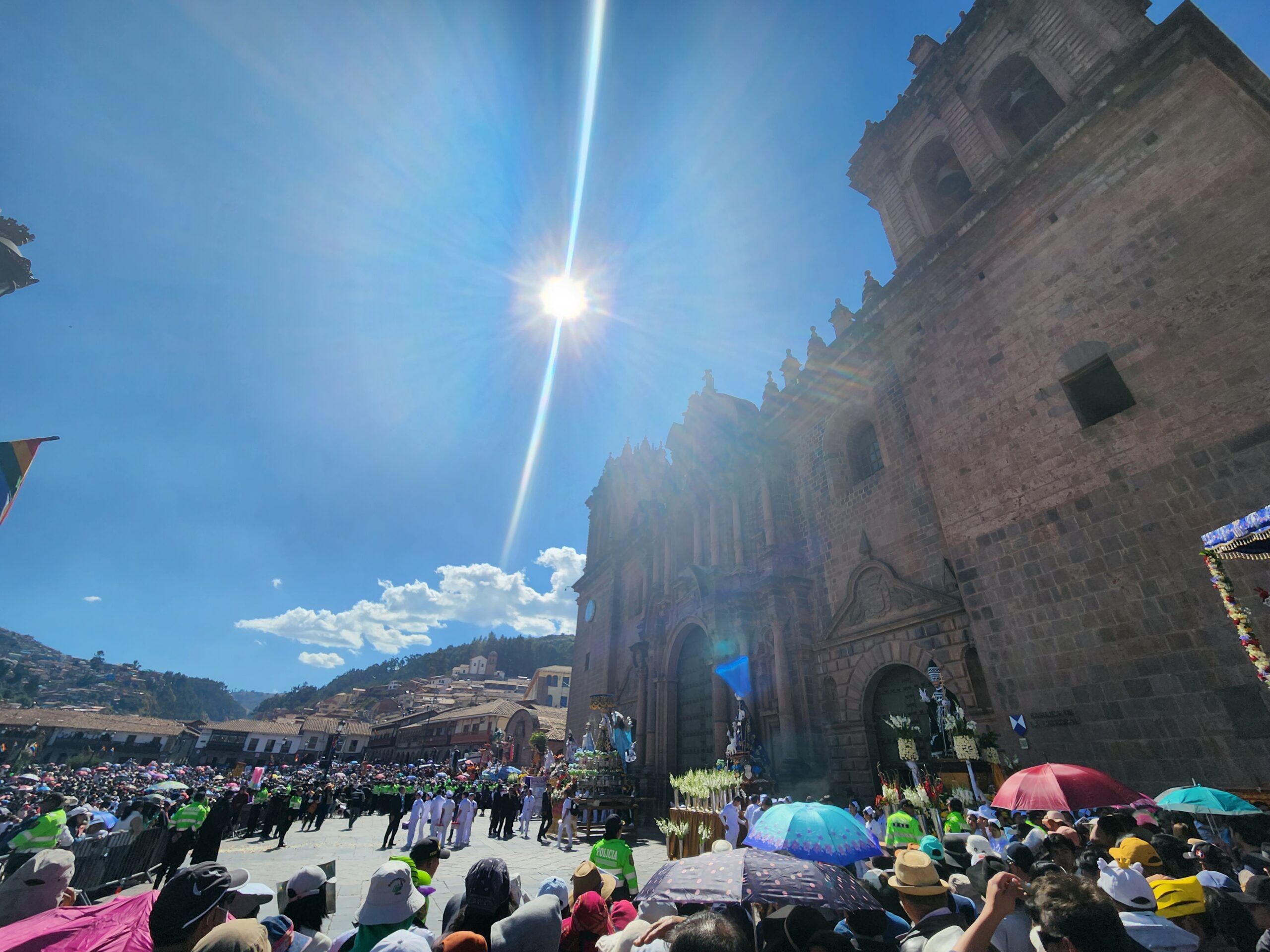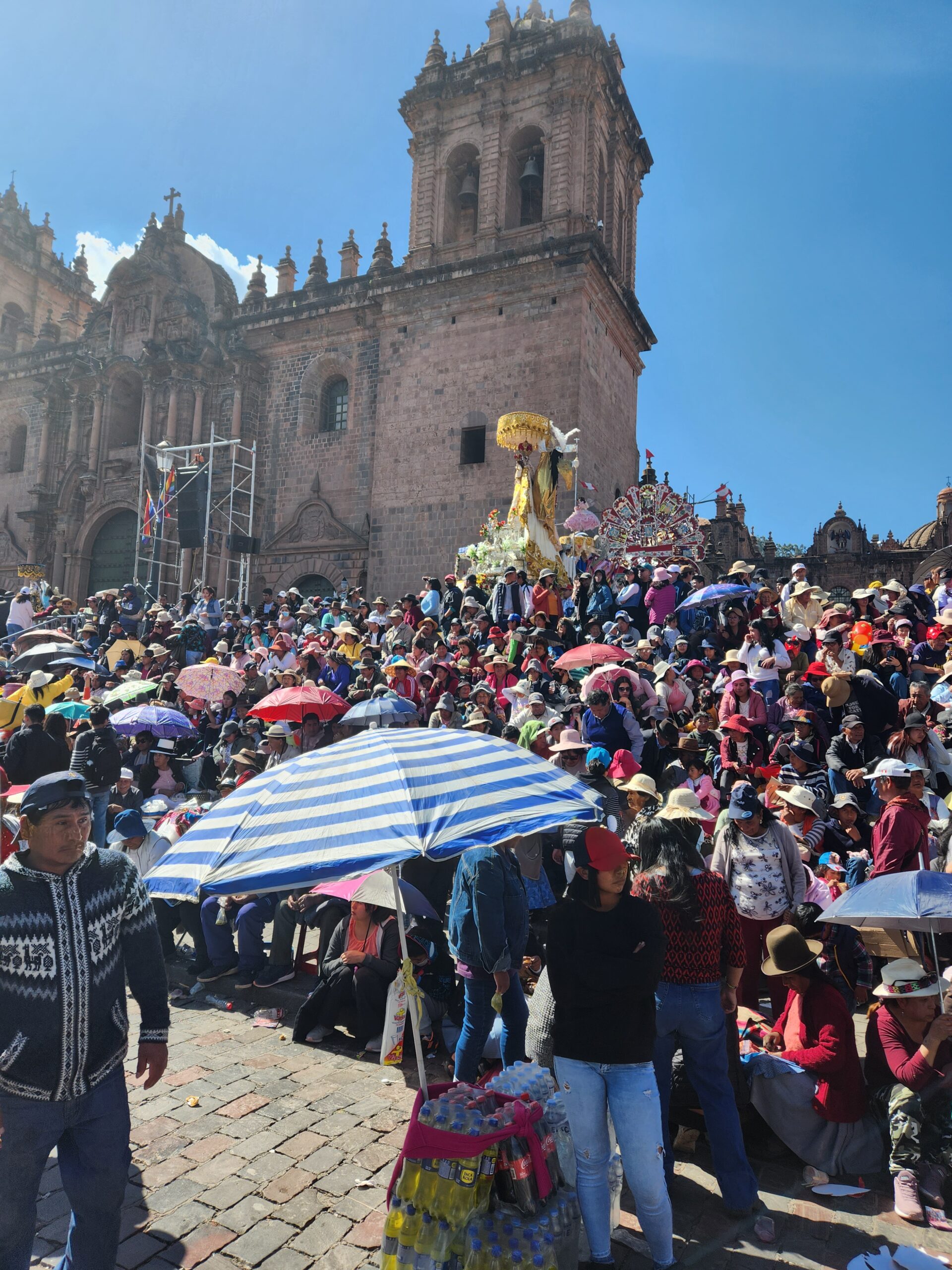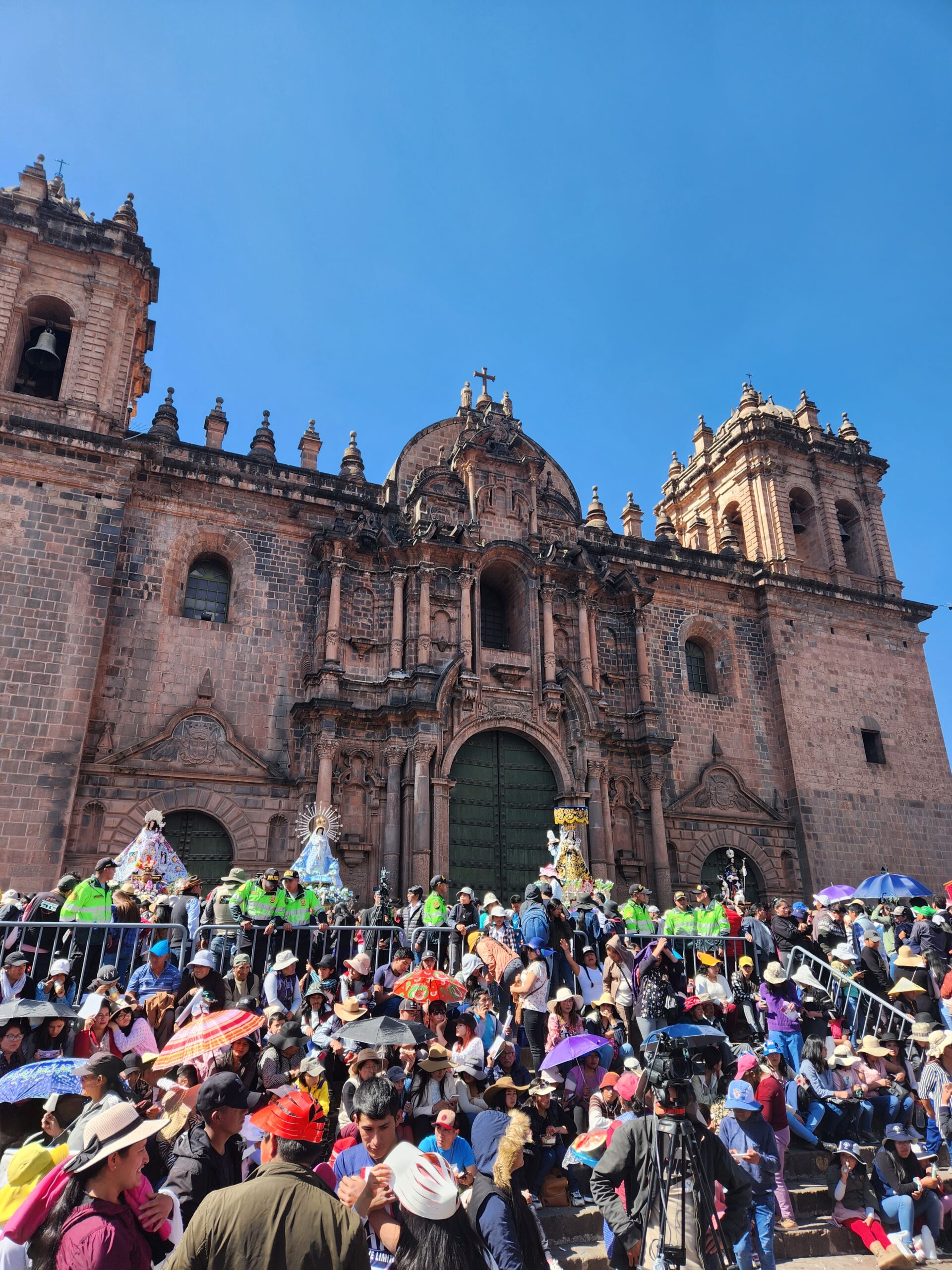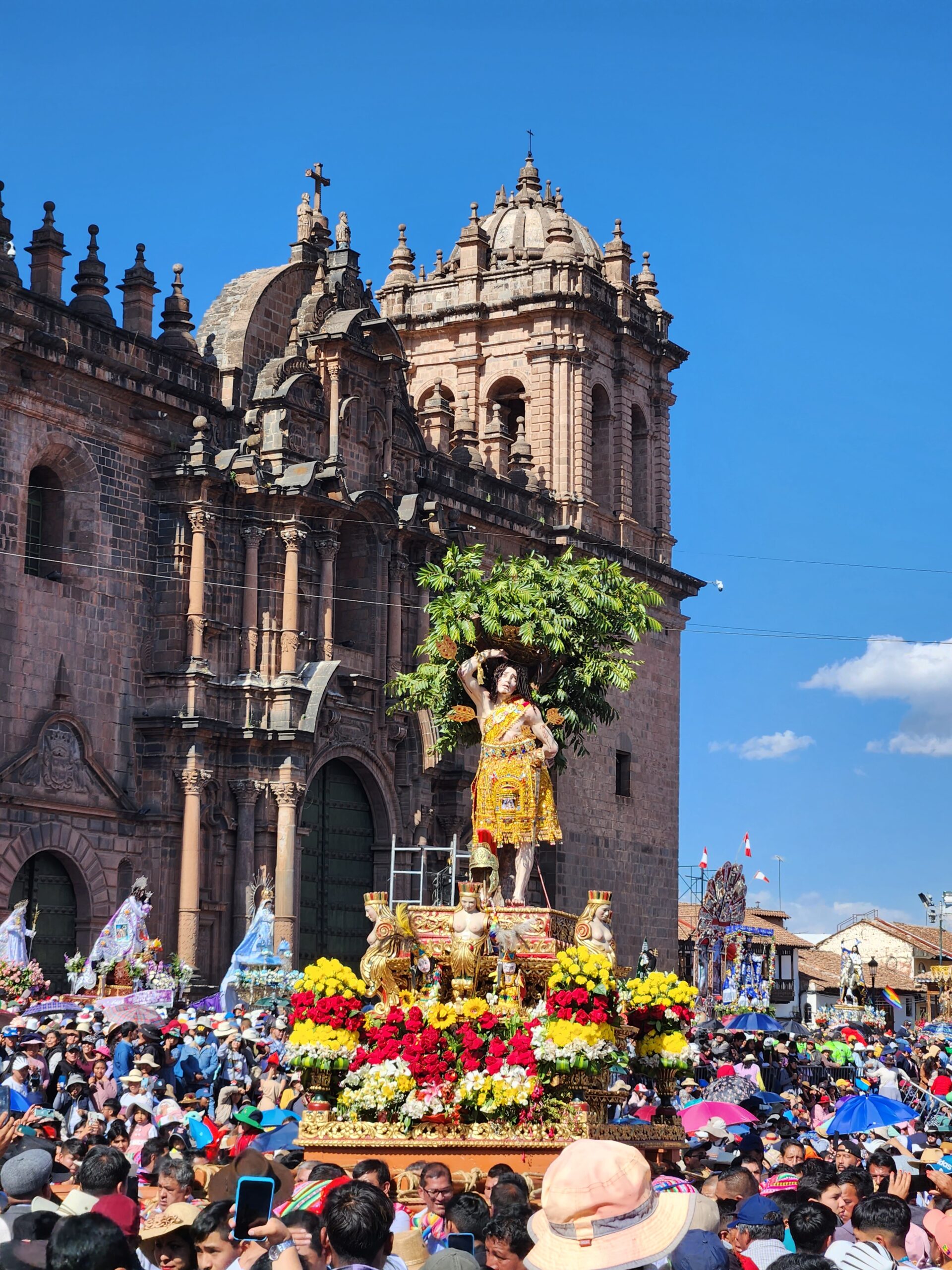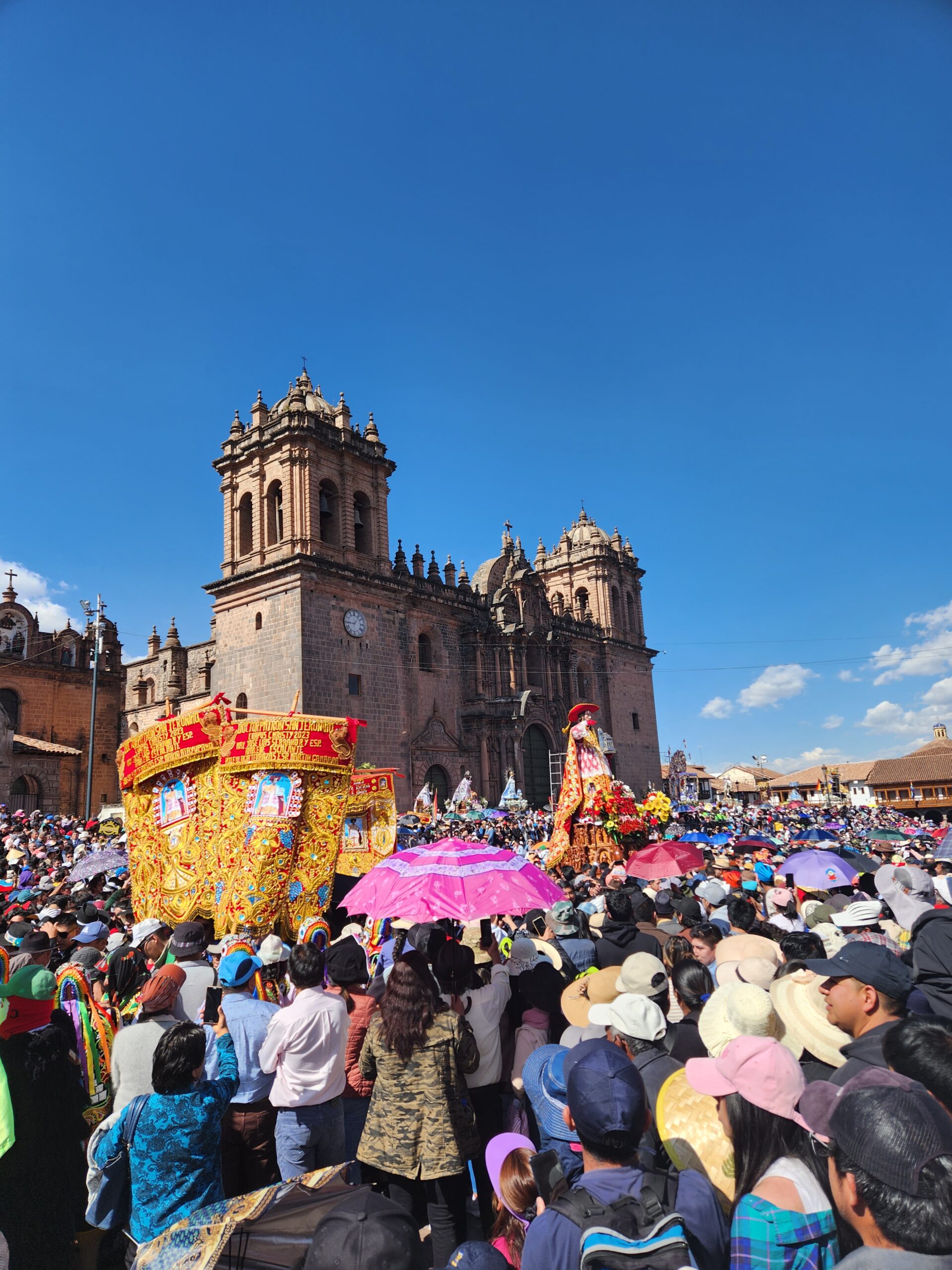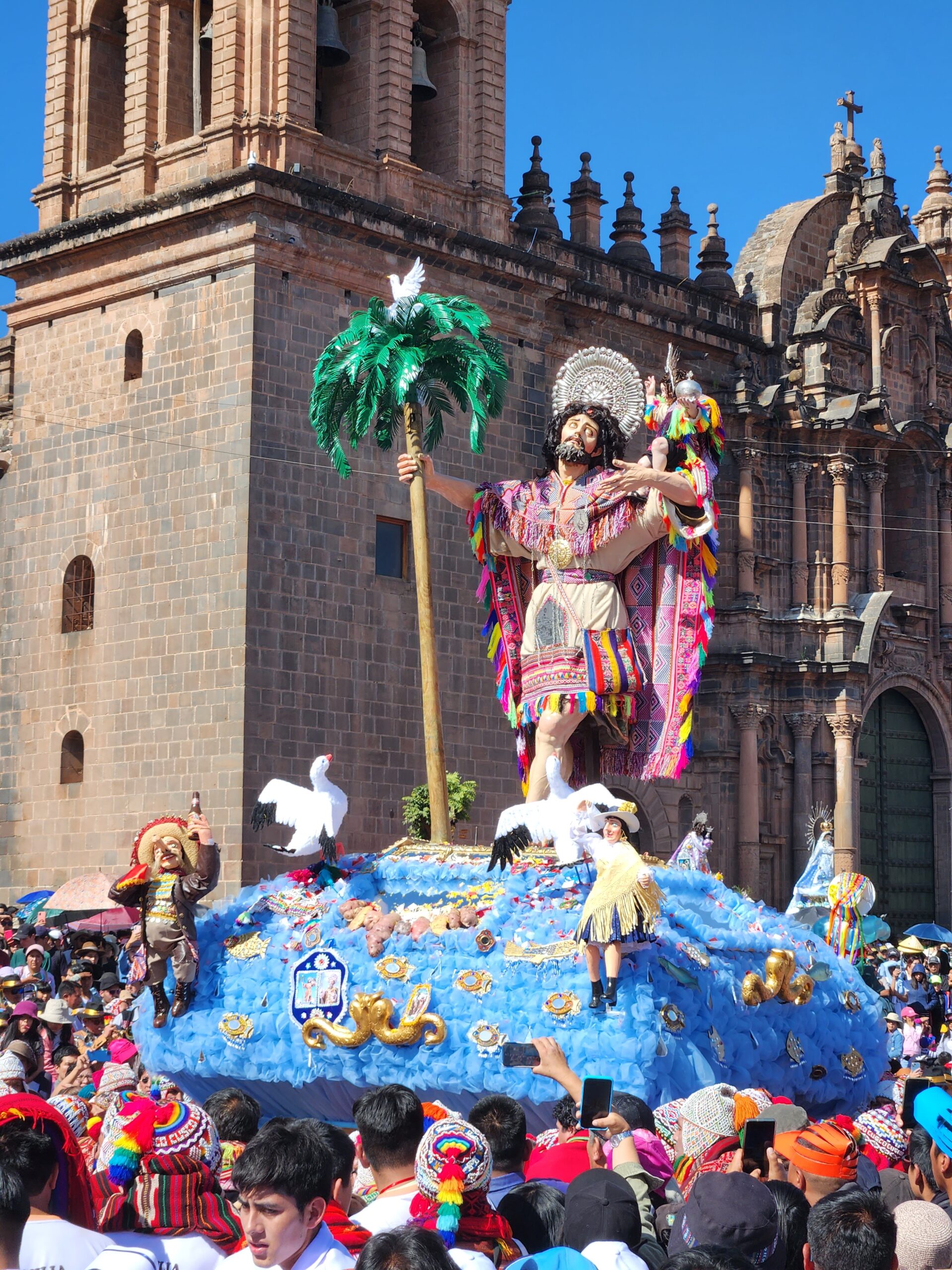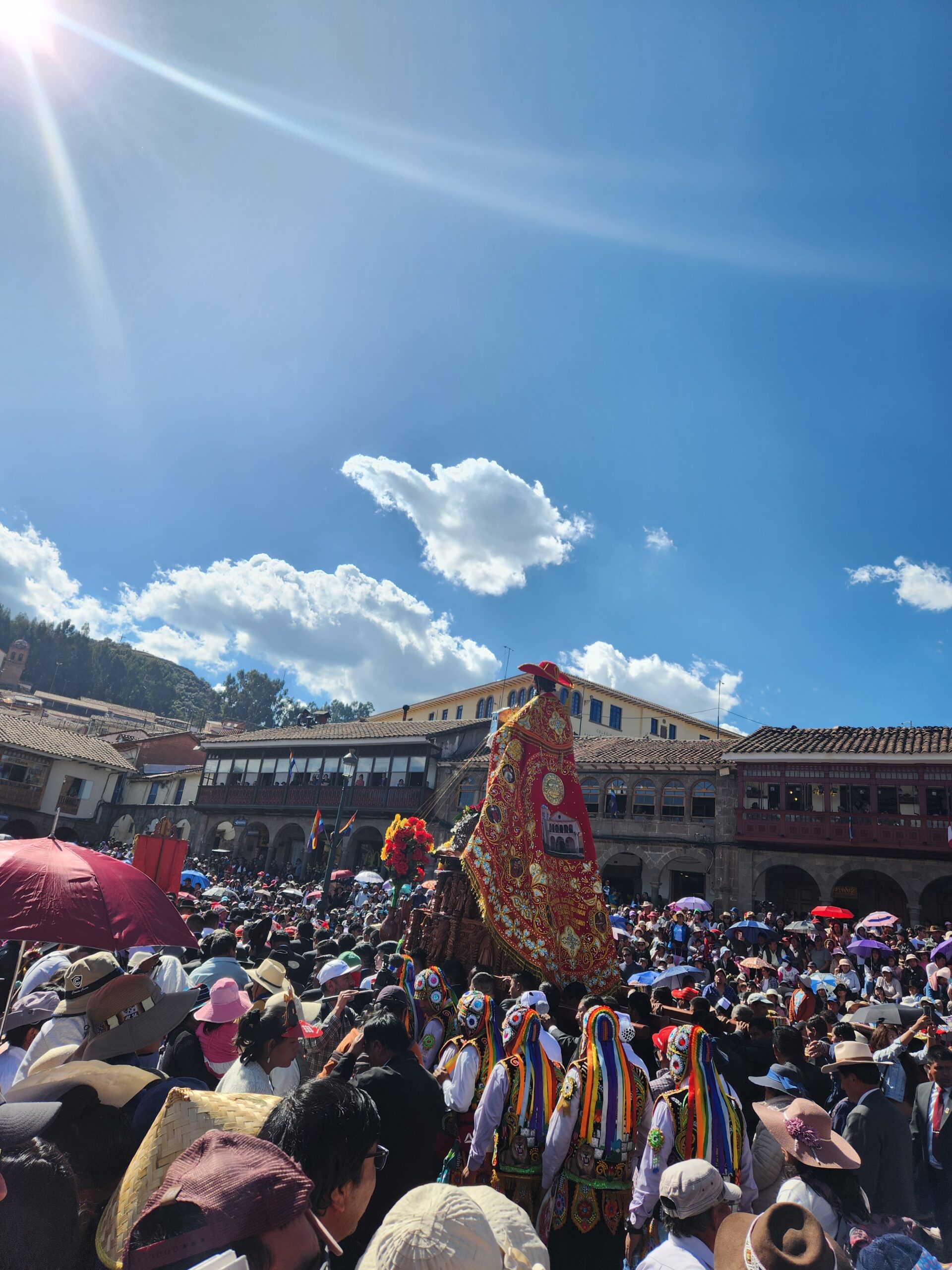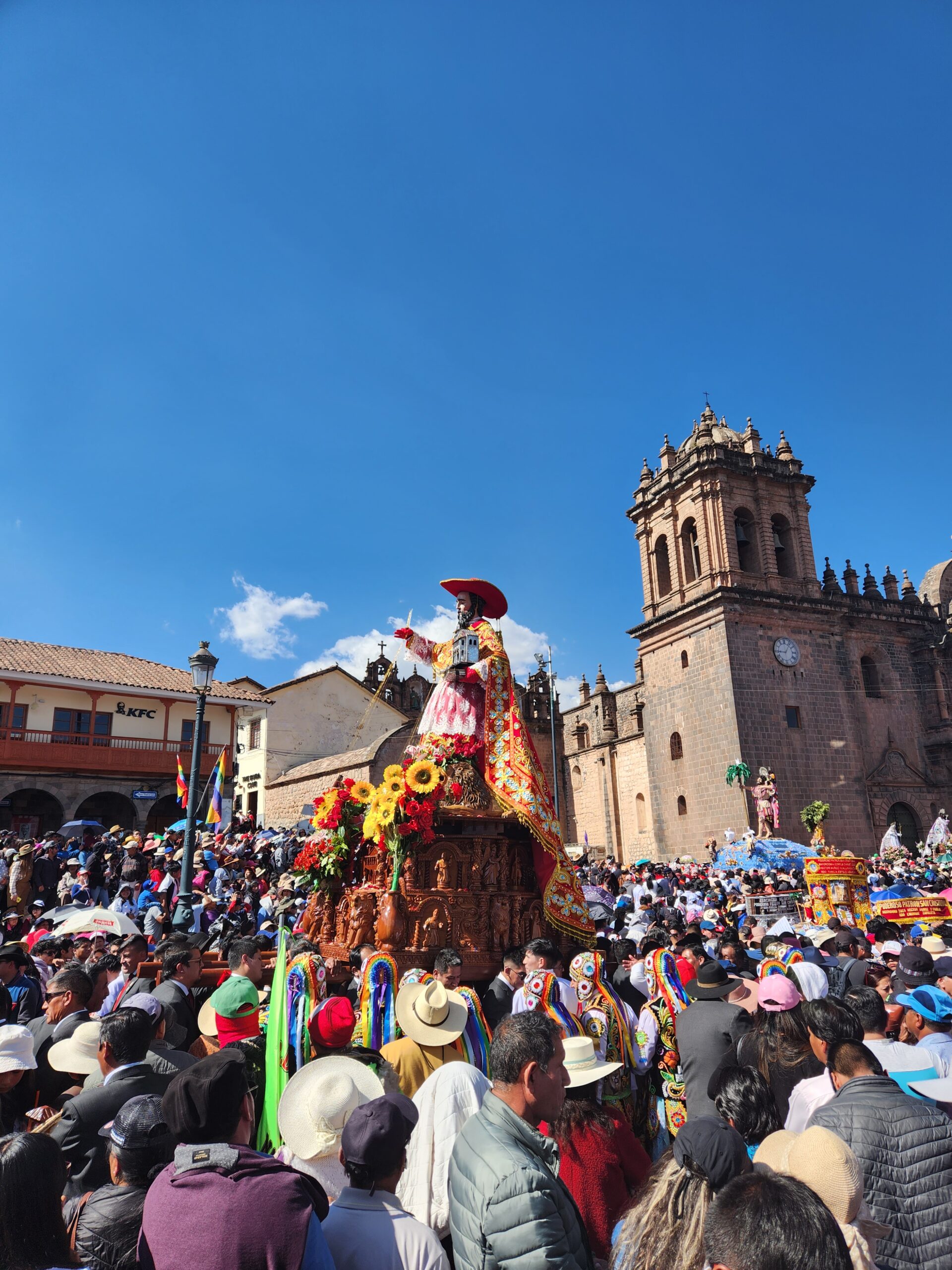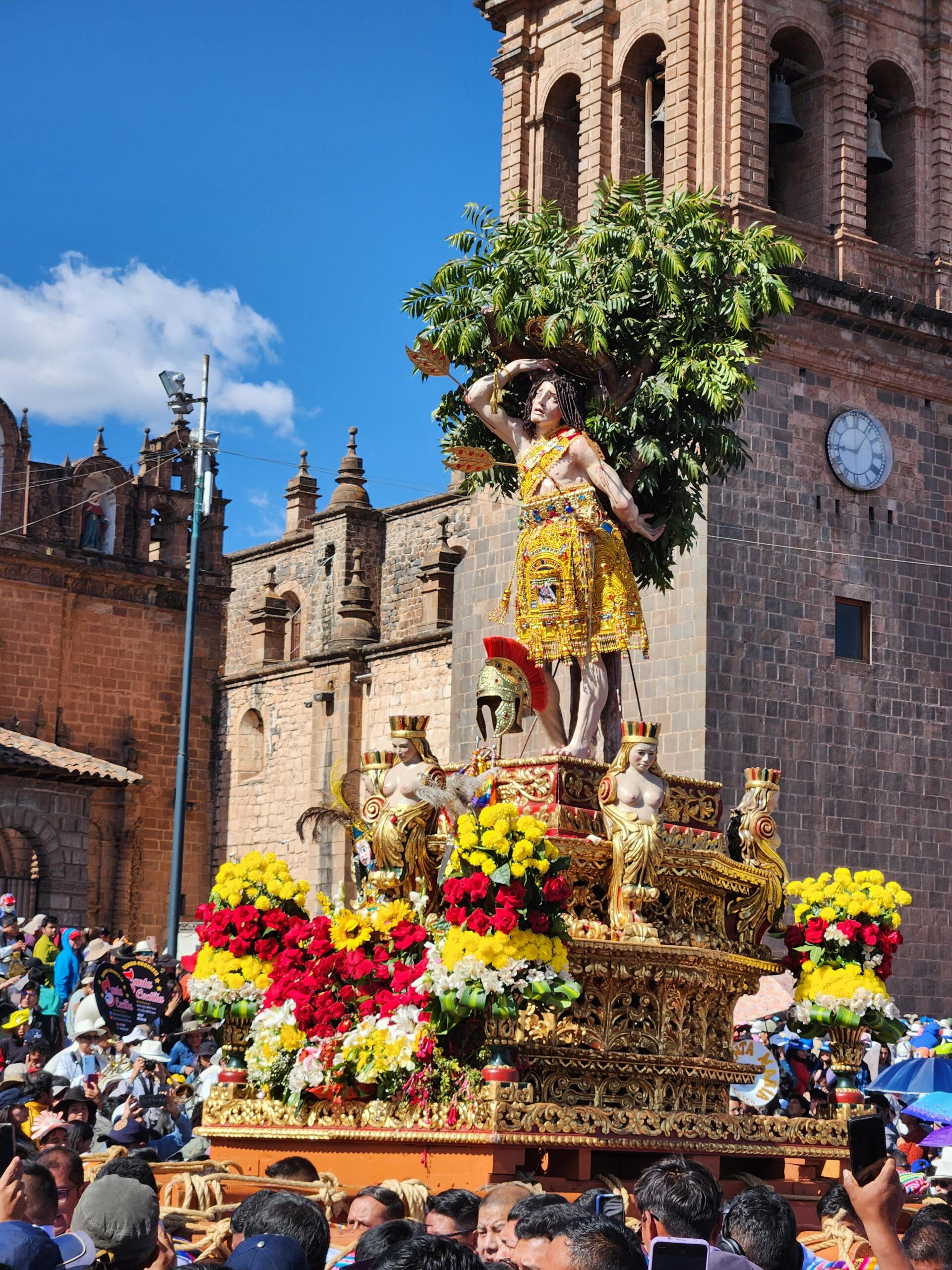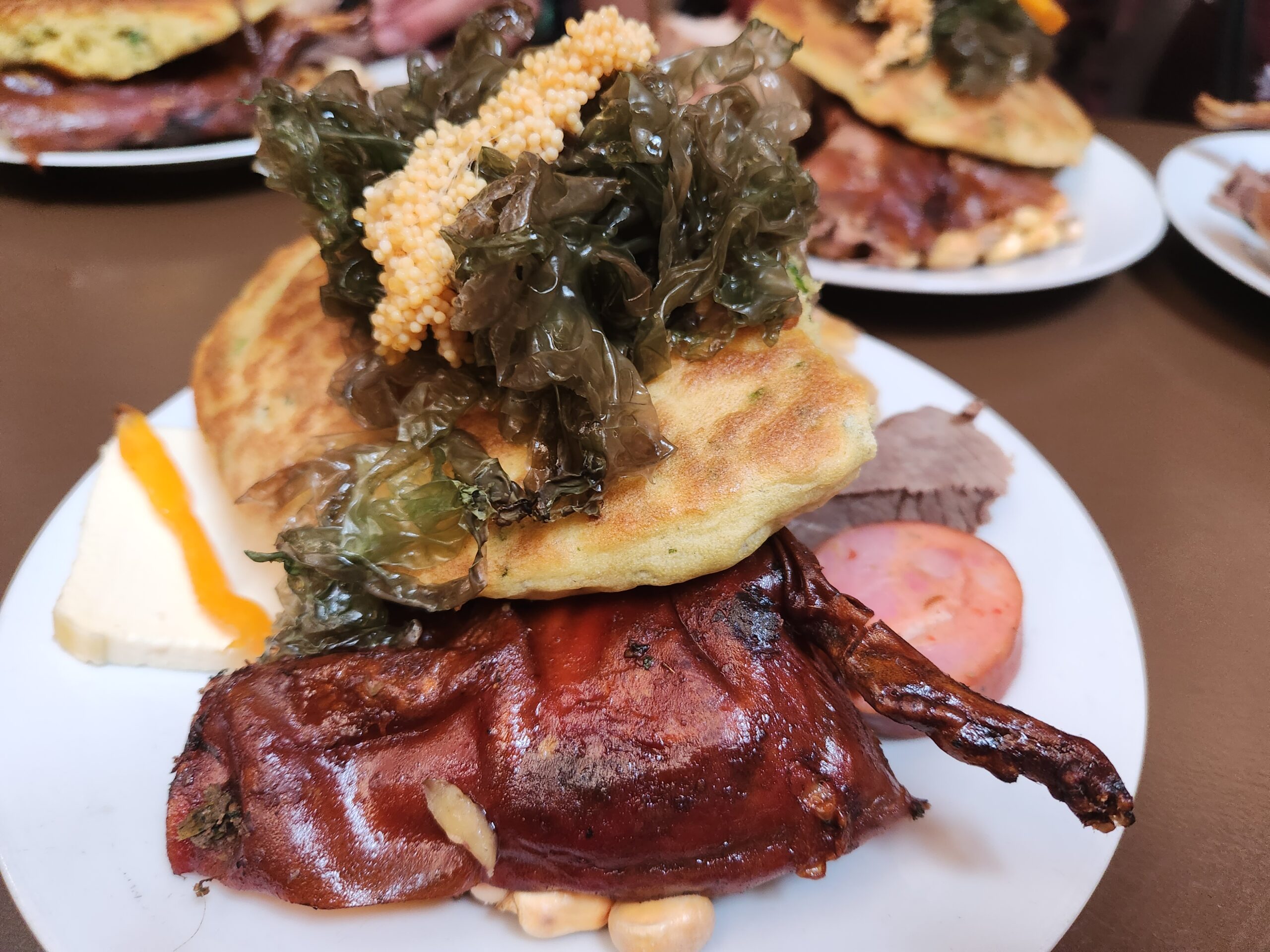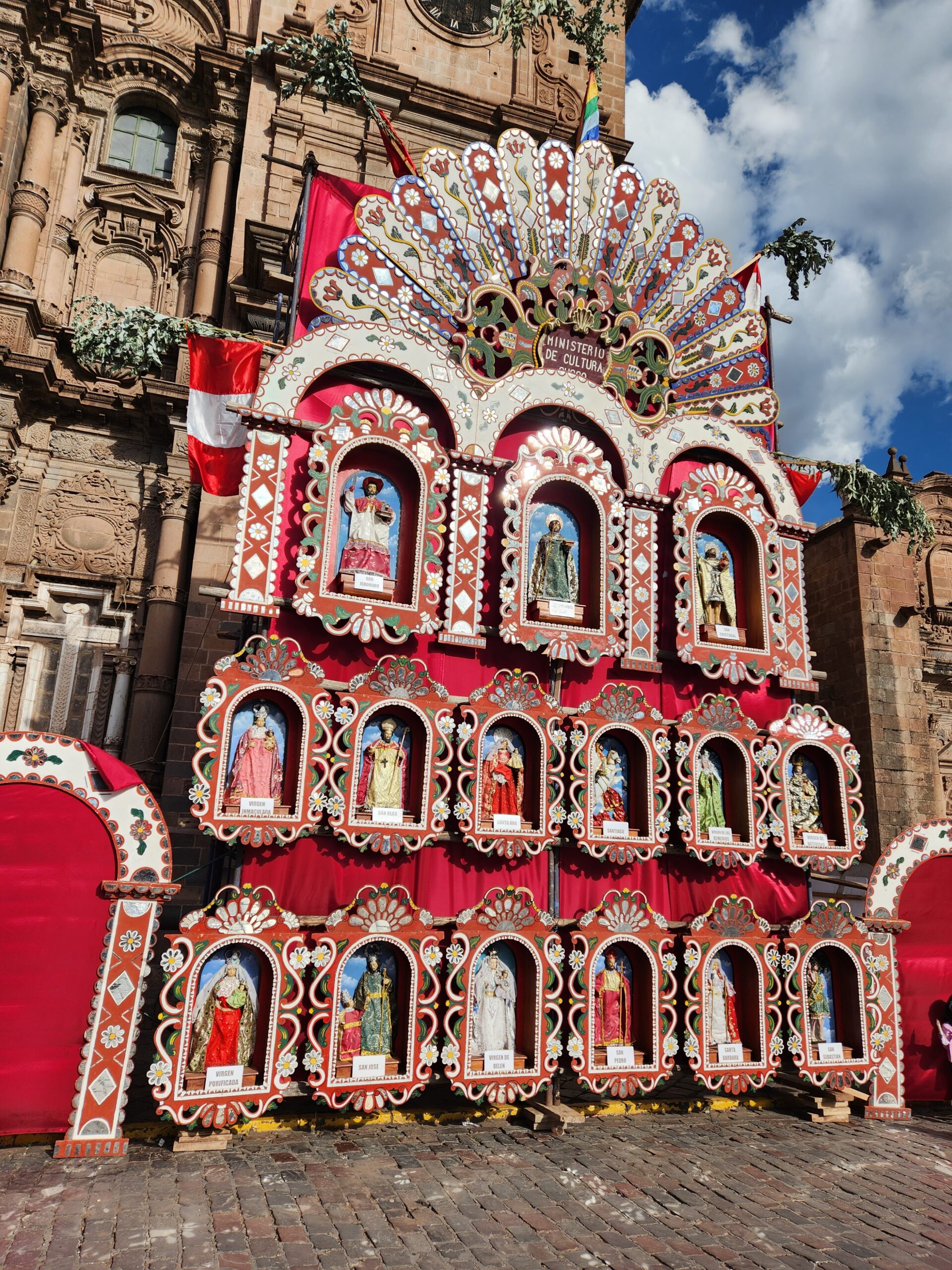Out of all the festivities during the month of June in Cusco, none are more revered than Inti Raymi and Corpus Christi. While one is a reenactment of the Incan solstice festival, the other is a Catholic celebration that was brought to South America by the Spaniards. Despite originating from distinct empires, both of these celebrations are revered to this day by Cusqueños. They have been a part of the culture for hundreds of years and represent the fusion of two cultures whose influence continues to resonate throughout Peru and neighboring South American countries. Despite undergoing multiple adaptations throughout the years, these festivals have maintained their essence and managed to embody the beauty of Peru’s tragic yet vibrant past.
In this article, we will explore both of these epic celebrations in detail. From their origins to the transformations they underwent to stay relevant, no aspect will be neglected. Each festival provides a glimpse into a different era and showcases the dedication Cusqueños have to their royal heritage. It’s breathtaking to witness, especially since their passionate celebration keeps an essential piece of history alive. These festivals are the fruits of hundreds of years of innovation, spirituality, conquista, and rebellion, which makes them enchanting threads in the tapestry of human history. They came from different worlds but managed to fuse into the glorious culture of Cusco, so get ready to get an intimate glimpse of Inti Raymi & Corpus Christi!
Dive Into the History of Inti Raymi & Corpus Christi
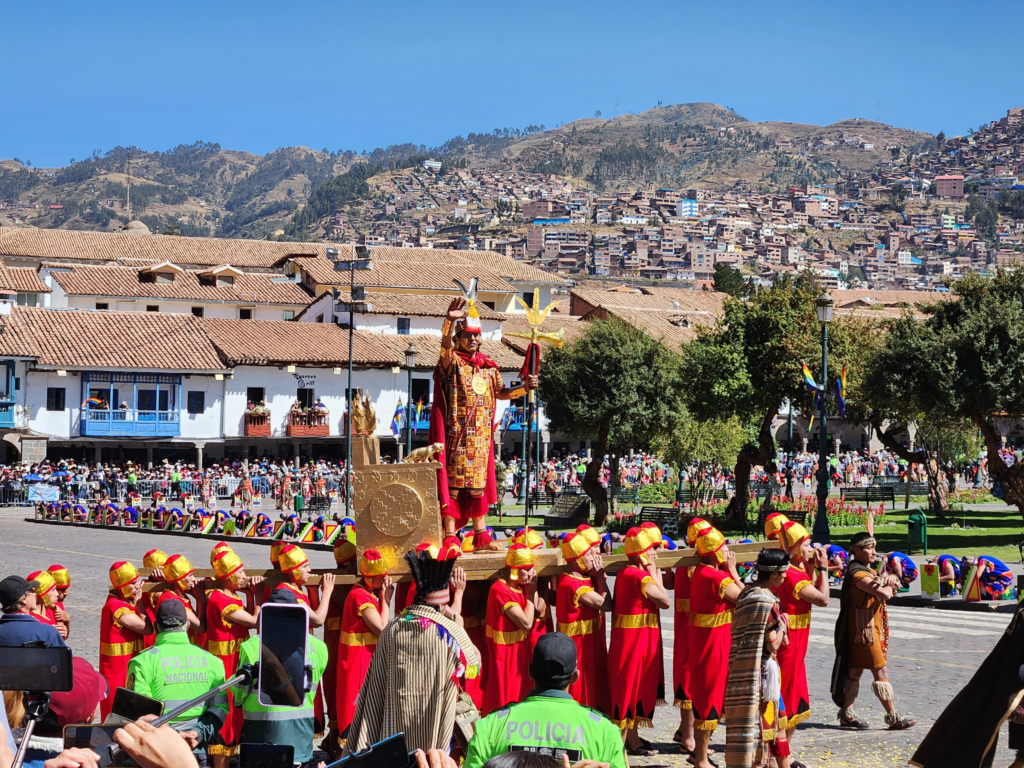
Inti Raymi – From surviving Incan revolutions to being banned by the Catholic church, the Inti Raymi is one of the most resilient indigenous celebrations in South America. This Winter Solstice festival was originally celebrated by native tribes before the Incas rose to power, but over the years became incorporated into the Incan religious and political structure. Even though Cusco steals the show, variations of this festival are still celebrated throughout the old Incan territory in modern-day Ecuador, Bolivia, Argentina, Colombia, and Chile.
At the height of the Incan empire in 1430, Wawa Inti Raymi was embraced by the revered Inca Pachacútec as part of his re-organization of their political structure. It was celebrated on the 21st of June to commemorate the re-birth of the díos Sol to start another year within the “Tiempo circular inca”. Instead of looking at time linearly, the Incas saw it as a chronological circle that went hand in hand with the Incas being sent by the díos Sol to modernize the tribes of the antiguo mundo. The festival lasted 15 days and was celebrated in the main plaza Huacaypata and in the neighboring temple of the sun in Coricancha. It consisted of dances, religious ceremonies, and animal sacrifices that were given out to everyone who participated.
The Wawa Inti Raymi was celebrated by around 100,000 attendees who had to semi-fast for 3 days with uncooked white corn, water, and an herb called chúcam. To prepare for the festival it was prohibited to light fires in Cusco and the Incas didn’t sleep with their women for days. These traditions ensured that the festival was indulged in with absolute delight. While the upper-class Orejones and nobles Incas de sangre real got to celebrate in the main plaza Huacaypata, the rest of the population participated in the neighboring plaza Cusipata.
To kick off the celebration, the Incas awaited the dawn of the sun barefoot and on their knees with their arms wide open. As the first rays of light fell upon them, they gave kisses to the air and received their astral king. The main Inca gave cheers with 2 large keros (massive decorative cups) of chicha de Jora that were originally pure gold and silver but were later replaced by wooden cups after the Spanish Conquista. The Inca’s parents drank from the kero in his left hand while the kero in the right hand was poured out into golden basin.
From there they went to the Coricancha temple which was covered in sheets of gold and worshipped the sun. After performing various ceremonies, they regrouped in the main plaza and sacrificed multiple rounds of cattle that were cooked and distributed to the attendees for them to eat. This feast was accompanied by copious amounts of the fermented drink chicha and a series of dances by the tribes submitted to the Incan empire. Fueled by this mild alcoholic drink, they danced furiously for days to proclaim their loyalty to the Inca. It was an epic celebration that captivated the royal class and brought the top caracas from all of the tribes under the Incan empire.
The last time the Wawa Inti Raymi was celebrated by the Incas was in 1535 just one year before the Spaniards took control of the empire. Up until 1572, the Spaniards tolerated the festival until Virrey Francisco Álvarez de Toledo proclaimed the ceremony was pagan and went against the catholic faith. Despite being abolished, the Incas continued celebrating the festival in secret. Over the years the tradition began to slowly get lost, and would have been erased forever if it wasn’t for Inca Garcilaso de la Vega.
Inca Garcilaso was the son of an Incan princess(ñusta) and a renowned Spanish captain, which allowed him to experience the best of both cultures. He grew up in Cusco right after the Spanish conquest and became arguably the most iconic Peruvian author of all time. During his childhood, he was constantly told stories in Quechua about the glory of the Inca empire by the remnants of the Incan royal family from his mom’s side. The Incas didn’t have a written language, which made storytelling a crucial way for them to pass on their history. Due to the internal fighting and genocide of the royal family led by Atahualpa, these stories were hard to come by and were quickly disappearing.
Armed with the education that only the son of a Spanish captain would receive, Inca Garcilaso was groomed by fate to bridge the gap. He was an avid writer, and this early exposure to Incan stories ended up saving countless details of the Inca empire that otherwise would have been lost. His dad had an equally impressive amount of exploits that he would later write about, which made him the voice of both worlds. He wrote the Comentarios Reales de los Incas and Historia General del Perú, which were essential for preserving crucial parts of Incan & Peruvian history. His first book detailed the Incan empire and Inti Raymi celebrations in-depth, which provided the building blocks of its eventual recreation.
It wasn’t until 1944 that the Wawa Inti Raymi festival experienced a revival. This time instead of being a religious ritual, the event was designed to attract tourists and boost the city’s festivities that are celebrated in June. It was rebranded from Wawa Inti Raymi to el nuevo Inti Raymi. Its script was written in Quechua by the Cusqueño artist Faustino Espinoza Navarro and was promoted into existence by Huberto Vidal Unda. Together they managed to bring this priceless piece of history back from the dead and incorporate it into Cusco’s annual festivities along with Corpus Cristi. Many pieces of the ceremony were changed to be more theatrical, including moving part of the festival to the Sacsayhuaman ruins overlooking the city.
Despite these artistic liberties, the nuevo Inti Raymi is still an essential part of Cusqueño culture. It celebrates the legacy of one of the world’s most mysterious and impressive indigenous empires. To make it even more enchanting, the performance is carried out among some of the most iconic Incan ruins. For a brief moment, what was once stuck in the past as a memory comes to life with vivid detail and passion. It provides a glimpse into a fallen empire that managed to defy time and stay memorable for generations after its demise. The Inti Raymi festival is an unapologetic rebellion against religious oppression and censorship. It makes anyone who watches it feel proud to be Cusqueño, so travel back in time with this inspiring celebration!

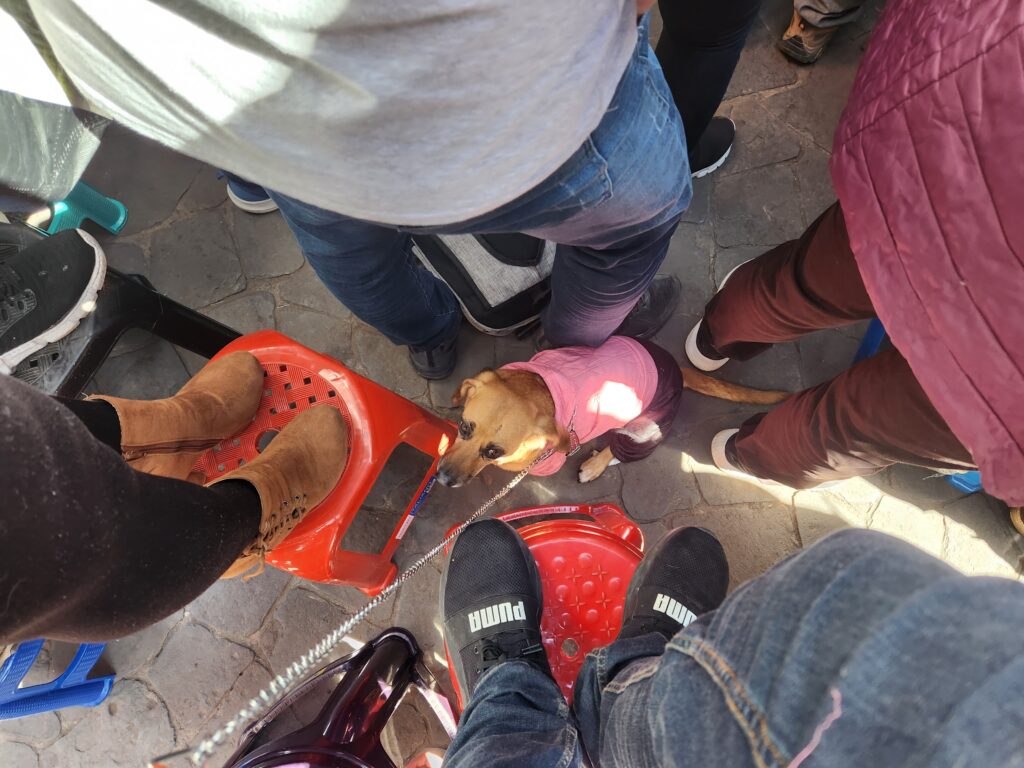
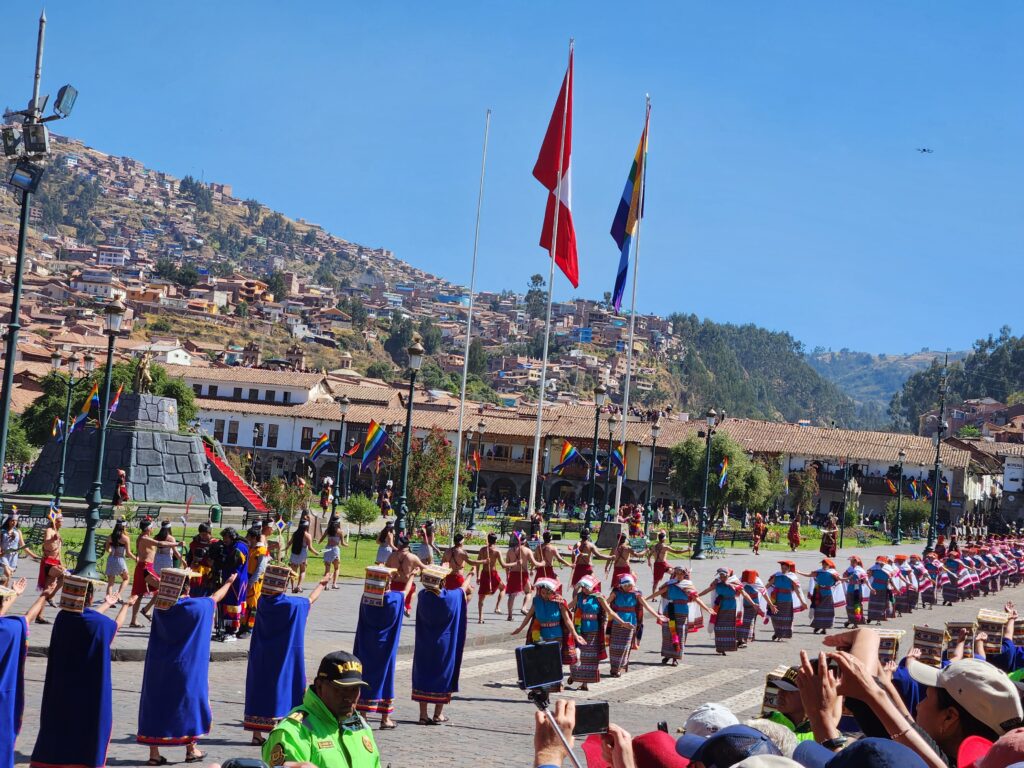


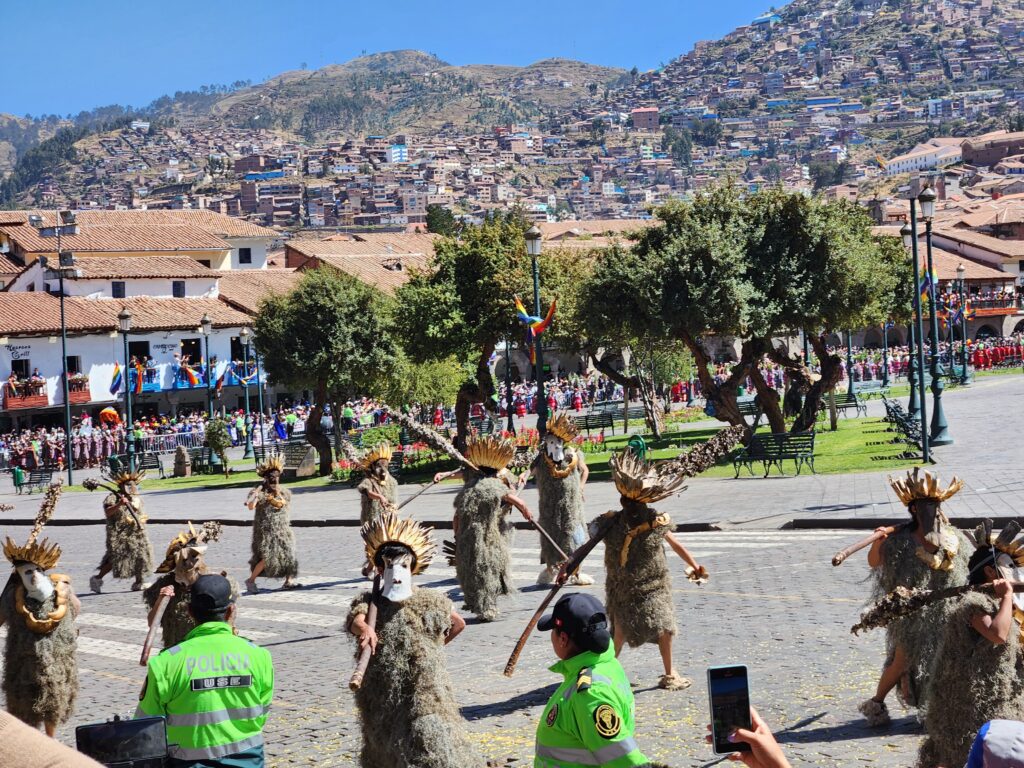
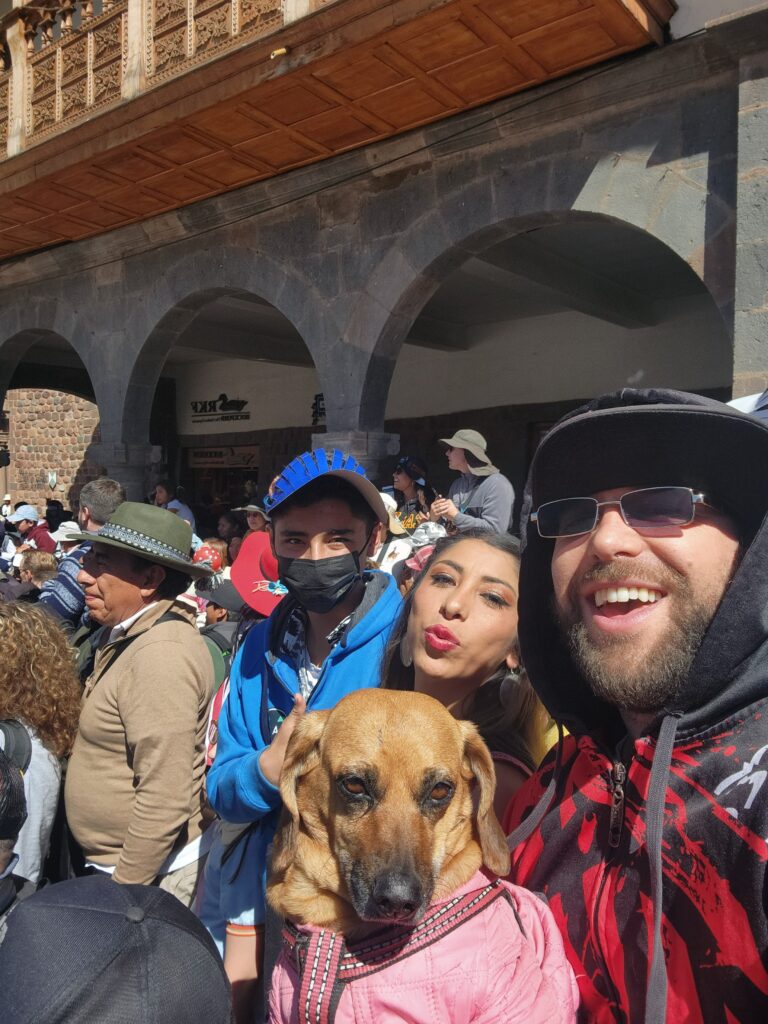
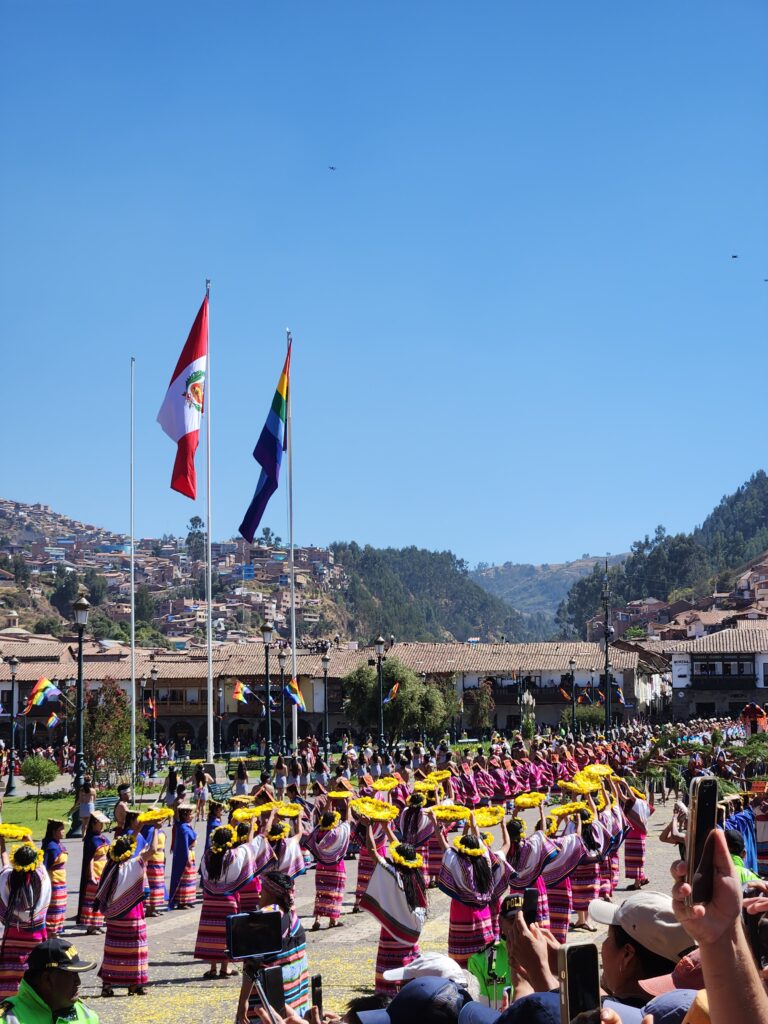
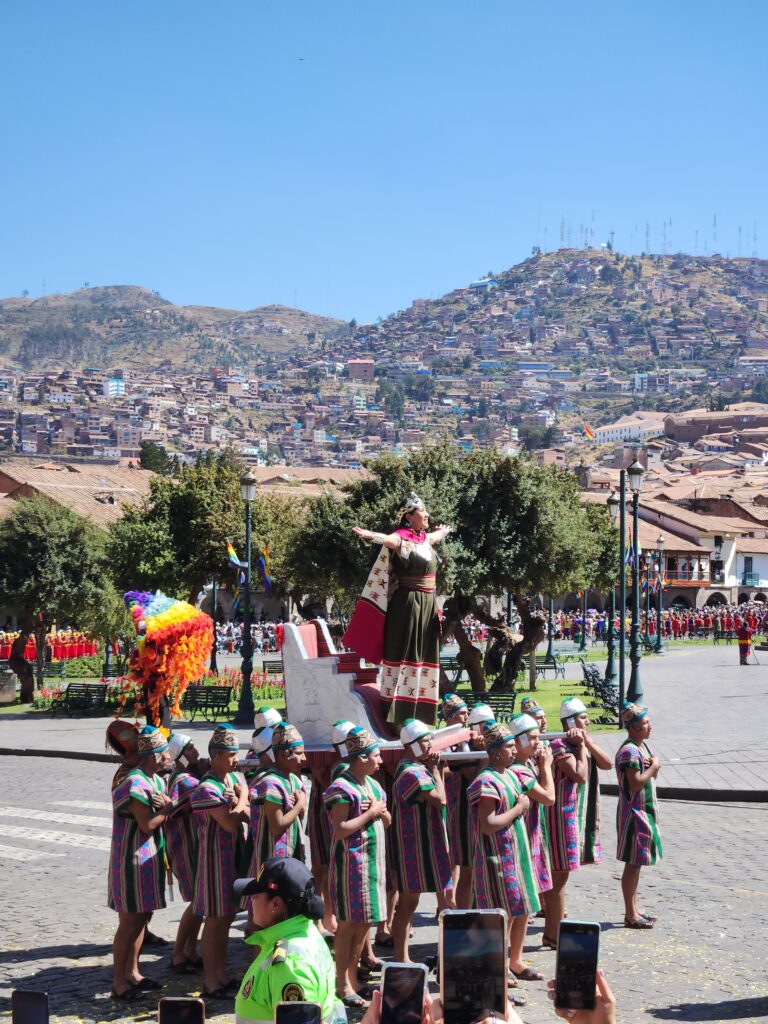
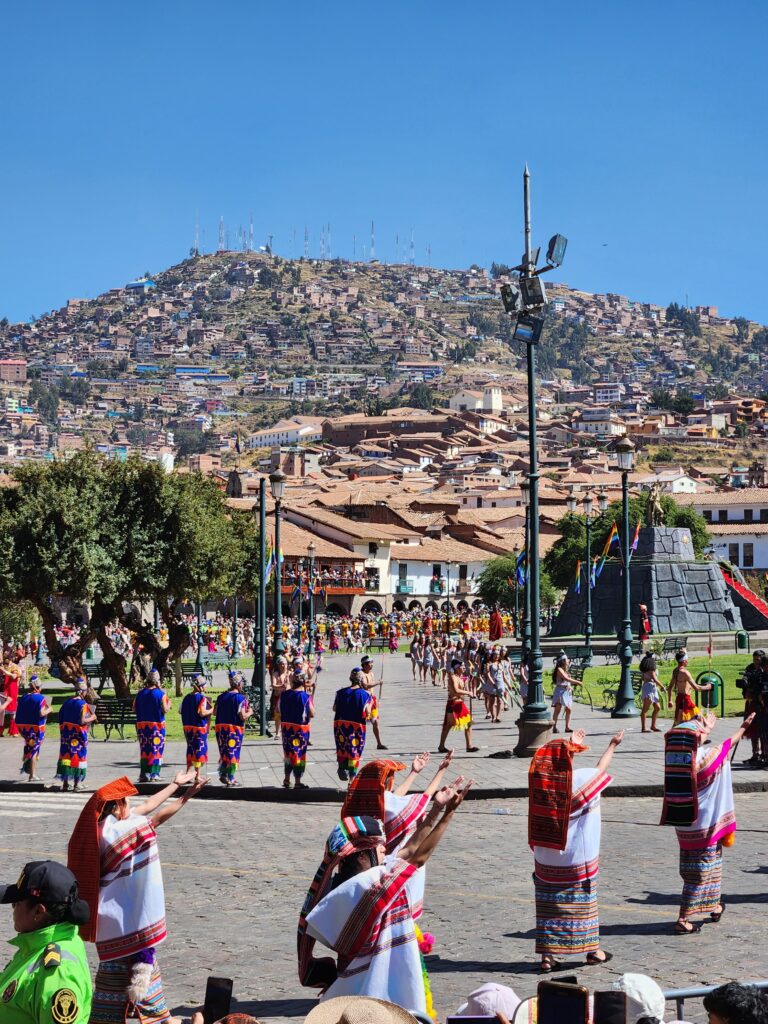
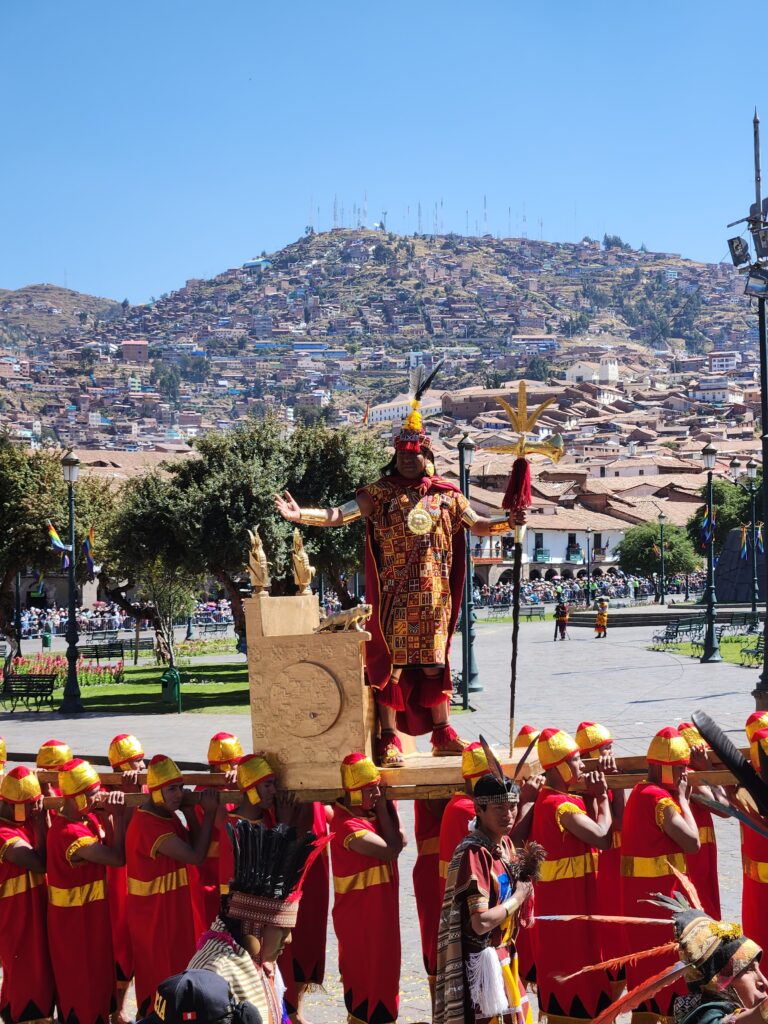

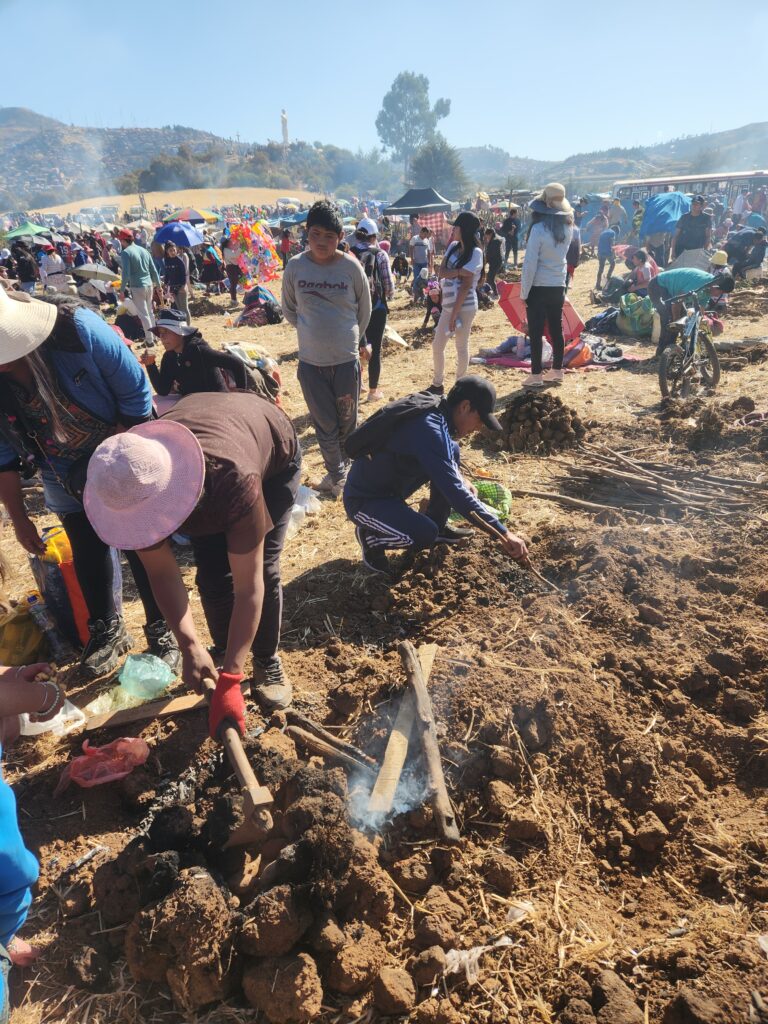
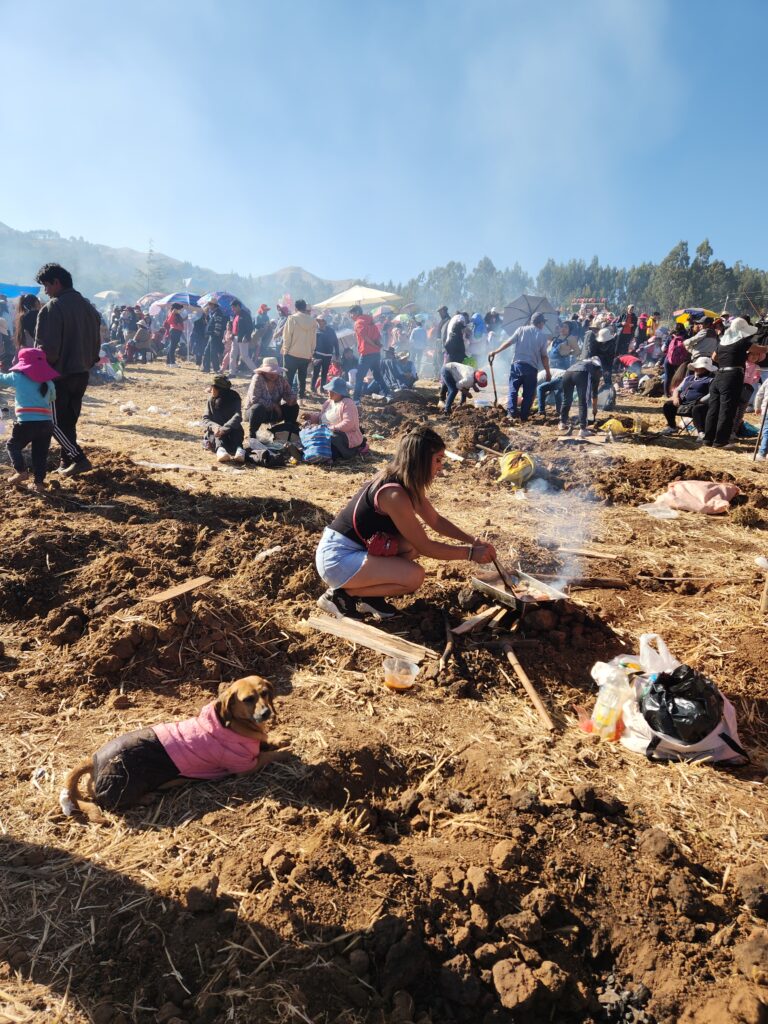
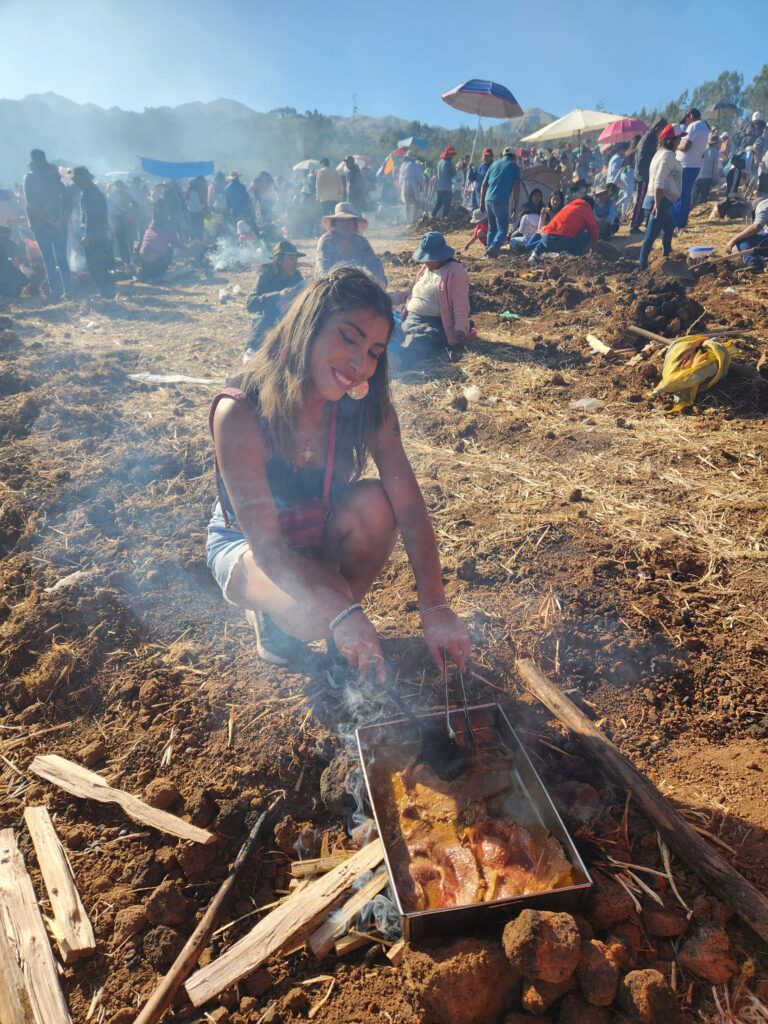
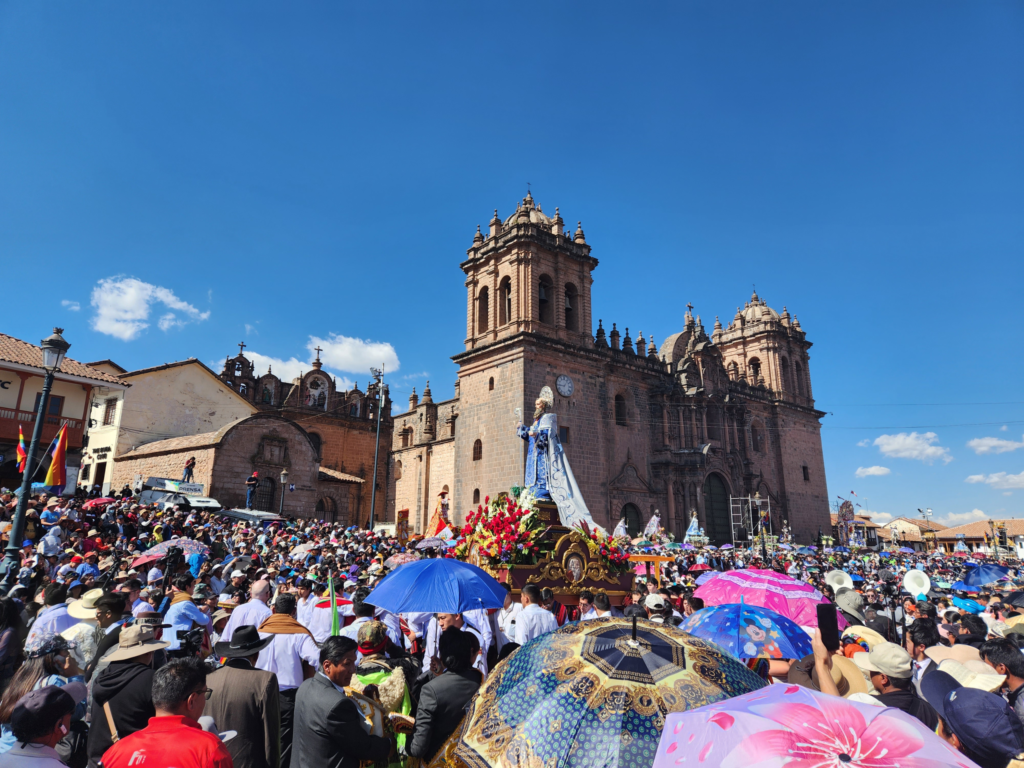
Corpus Christi – Despite being introduced to the Incas by the Spaniards, Corpus Christi has been celebrated for even longer than Inti Raymi. It first emerged during the Middle Ages in 1208 thanks to Juliana de Cornillion who wanted to honor the Body and Blood of Christ during the Catholic Eucaristía. In 1246, it was adopted by the Obispo de Lieja in Belgium, Roberto de Torote. He incorporated it on the Thursday after the octava de Pentecostés, and it was officially celebrated for the first time in 1247 during the diócesis de Lieja. From there the celebration started to gain traction as it was adopted by multiple Obispos and cathedrals.
Despite reaching all the way to Bolsena, Italy, Corpus Christi didn’t become an international holiday until the Pope took notice. In 1264, Pope Urbano IV gave official orders to incorporate Corpus Christi within the bula Transiturus de hoc mundo. This firmly established Corpus Christi as a Catholic holiday and caused it to be adopted throughout every country where Catholicism was the dominant religion. Peru was no exception, the Spaniards brought this tradition with them as they crossed the Atlantic Ocean and colonized the Americas.
Even though Peru is far from the only country that celebrates Corpus Christi, no other nation has the same style as Cusco. This is due to the fact that the Spaniards had to modify it to help them dominate the remnants of the Incas. When the Spaniards first reached Peru, they were shocked by many of the Incan traditions. What most caught their eye was every year the Incas held parades in Cusco where they solemnly carried mummified corpses of the most prominent leaders of their society. These included members of the royal family, ayllus, and Incan kings. Their ingenious method of mummification combined with the dry climate of Cusco allowed these corpses to stay intact for hundreds of years. Some mummies had all their hair and looked like they were still alive, which was an incredible feat. Many Incan mummies are still intact to this day in museums despite being trashed by the Spaniards.
It was an iconic native ceremony, which made it a direct threat to Catholicism. Due to being such an integral part of Incan culture, the Spaniards couldn’t outright ban this tradition. Instead, they hijacked the celebration and replaced the mummies with saints from various regions of Cusco. Today members of each cathedral and multiple organizations all have their own saint that’s elaborately decorated and weighs hundreds of pounds. During Corpus Christi, they are carried for miles by dozens of devotees who arduously bring them from their corresponding cathedrals all the way to the main Cathedral in the Plaza de Armas de Cusco.
The sheer amount of resolve needed to elaborate and carry such intricate and heavy works of art is a testament to the faith of the Cusqueños. When examining its history, Corpus Christi is a bitter-sweet holiday for Peruvians. It showcases the lengths the Spaniards went to during their crusade to eliminate the illustrious legacy of the Incas. Despite their best efforts of intimidation and deceit, the glory of the Incas still shows through. From the open drunkenness to the impressive attention to detail, Corpus Christi is a feisty festival that refuses to be tamed.
When looking at the transformations it has undergone over the generations, Corpus Christi is still undeniably Cusqueñan. They even introduced a traditional dish called Chiri Uchu to the mix. It means “plato frio” in Quechua, and consists of chicken, cecina, cuy, seaweed & torreja. It’s a delightful combo that’s normally combined with copious amounts of chelas. No other place in the world celebrates Corpus Christi like Cusco, and that’s something to be proud of. The Cusqueños may have lost their original empire and kings, but their iron will to carry on and party is still very much intact!

